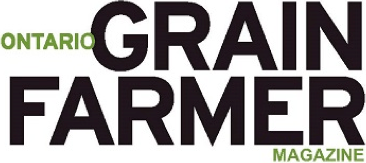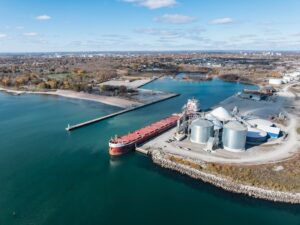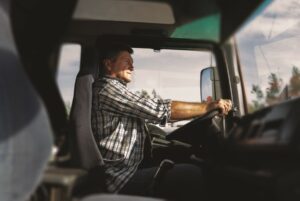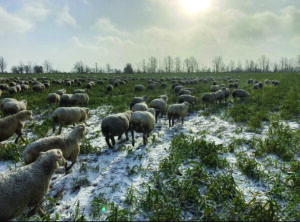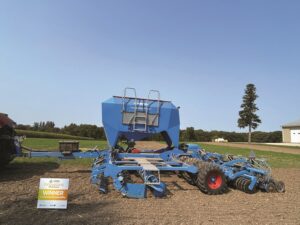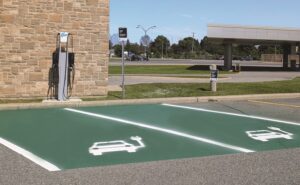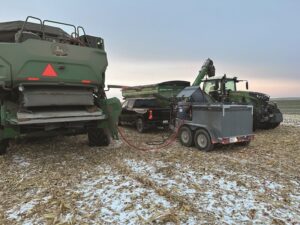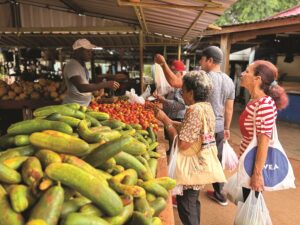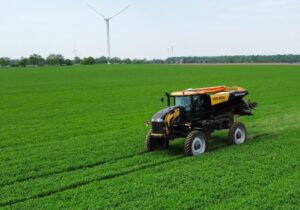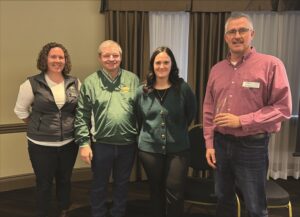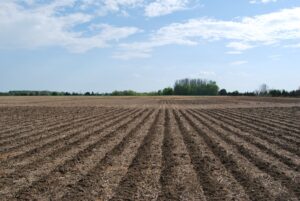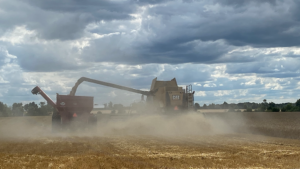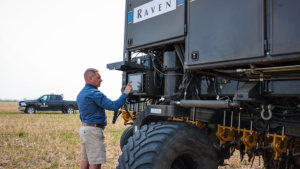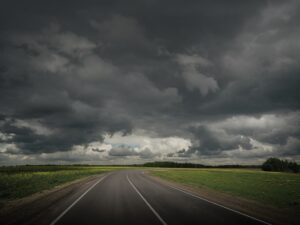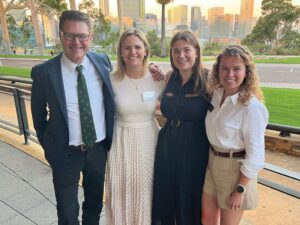Adapting to the market
Polish farmer pivots to livestock amid lower commodity prices
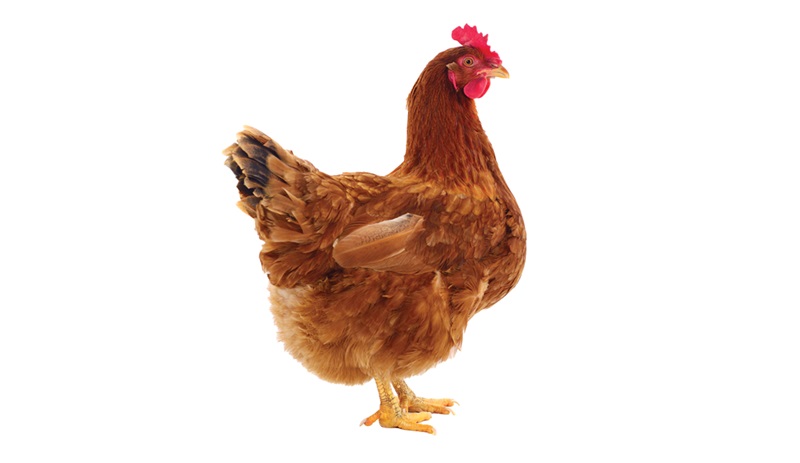
When global grain markets crashed in 2022, Polish farmer Maciej Brzozowski knew he had to make some changes on the farm.
The ‘perfect storm’ of war in Ukraine, prolonged drought and the rising cost of production made selling wheat on the open market completely unviable. Instead of exiting the industry, Brzozowski shifted gears, diversifying into poultry production to use his grain as feed rather than selling it.
“Three years ago, when the war started and wheat prices dropped drastically, it just wasn’t profitable anymore,” Brzozowski says. “Now, instead of selling cereals, I feed them to our broilers.”
Each six-week poultry cycle uses about 900 tonnes of feed, 200 tonnes of which comes from his own crops. This move turned grain from a break- even business into a source of value on the farm.
“Thanks mainly to the animal husbandry, I can still stay afloat,” he says.
“We wouldn’t have all these machines if it hadn’t been for the animals,” Brzozowski adds, gesturing to a John Deere sprayer and a fairly new 7R 310 tractor. At the time of the interview, a new 8R 340 was being transported across the Atlantic in a shipping container from the U.S. to Poland.
His shift mirrors broader trends in Poland, where cereals form the raw material basis for both the milling and animal feed industries. According to data from the Ministry of Agriculture and Rural Development, Poland harvests 34–35 million tonnes of cereals annually, of which wheat accounts for approximately 12–13 million tonnes. Much of the cereal produced in Poland goes toward sustaining its poultry and pig sectors.
PRECISION FARMING, RISING COSTS
Brzozowski farms 480 hectares (1,186 acres) and relies heavily on modern systems and automation. Using John Deere’s Operations Center platform, he develops his work plan remotely, scheduling and monitoring fieldwork from his home office. Once a task is set up, the system transmits detailed instructions—including route, depth and implement settings—directly to the tractor operator’s cab. In the event of an error, Brzozowski receives a real-time alert directly on his smartphone.
This level of connectivity and automation helps Brzozowski save time, reduce fuel consumption and limit unnecessary passes over the field. It also ensures a more consistent application of seed, fertilizers, and plant protection products—an increasingly important factor given rising input costs and tightening regulations.
“It also allows me to look back on three years of field data and make better decisions for the next season,” he says.
Brzozowski has invested in strip-till technology, including a Claydon Hybrid T4. The seed drill is ideal for a wide range of scenarios, particularly for direct drilling into stubble, minimum-tilled soil, or plowed land. The investment helps him maintain soil structure and reduce fertilizer use, especially on fields with challenging conditions.
Parts of his farm are quite rocky, which poses somewhat of a barrier, but he is working with contractors to remove stones at depth so the entire operation can eventually transition to strip-till.
“It’s part of our long-term strategy to lower costs and build resilience,” he says.
Yields vary significantly depending on weather. In a dry year, his wheat yields average five to six tonnes per hectare. In a good year, they can reach up to nine tonnes per hectare. Rapeseed yields come in between three and 4.5 tonnes per hectare.
Despite technological advances, Brzozowski says costs still outpace returns.
“Everything around us is getting more expensive—gas, fertilizer, energy—but grain prices are stagnating,” he says. “We know our production costs, but we can’t just add a margin like other industries. The market dictates what we get paid.”
REGULATION AND RED TAPE
Brzozowski is also frustrated by EU regulations that he says are becoming increasingly complex and restrictive. He is particularly concerned about the growing number of plant protection products banned from use in Europe.
“Almost all systemic protection products were withdrawn,” he says. “We’re left with just two or three options, and we can only apply them once.”
Although he applied for a precision agriculture subsidy under Poland’s National Recovery Plan following the Covid-19 pandemic, most of his investments—about 10 million złoty ($3.3 million)—have come from his own pocket. Recent policy changes have also reduced and capped the amount of land that can qualify under eco- schemes.
“Before, it was possible to combine the eco-schemes. Now it’s limited up to 300 hectares,” Brzozowski says.
“We were promised less bureaucracy and more support,” he adds. “Instead, it keeps changing and getting more complicated.”
Brzozowski is also concerned about increasing competition from Ukraine. He’s worried that Ukrainian farmers will gain access to the same market without the same restrictions. The validity of his concerns has yet to be determined.
“They have better soil and fewer limitations on fertilizer use,” he says. “For us, growing rapeseed takes six to seven ‘agro-technical’ procedures, plus pest control. They can do it with much less effort.”
FUTURE FOCUSED
Brzozowski isn’t planning to expand his livestock operations—he’s focused on making his current system as efficient as possible. “I have a wife and kids. That’s why we’ve invested in automation—so we can finally get a break, maybe take a vacation.”
He sees potential in genetic technologies that could reduce reliance on chemicals. “If we had more resistant plant varieties, we could spray less, which would save time and money,” he says. He already uses BASF’s Clearfield rapeseed varieties on fields with tough weed pressure, allowing for single-pass weed control.
Brzozowski’s brother, Marek, runs a 220-hectare grain farm that also adopted livestock—in his case, 6,500 pigs. Maciej supports him by supplying the grain.
“He uses both wet and dry feed to lower costs,” Brzozowski explains. “But pig prices are very low right now.”
The challenges Brzozowski’s brother faces are reflected across the country, where the national pig population has dropped more than 22 per cent since 2020 and many small producers have exited the industry.
POULTRY POWERS PROFIT
Poultry prices, on the other hand, have been more stable. Brzozowski supplies local slaughterhouses, and four of his six poultry facilities meet strict export standards, enabling him to sell meat to McDonald’s. But disease pressure is a constant concern.
“We’re lucky there aren’t many poultry farms nearby,” he says. “Just one infected bird in the region can shut things down.”
Brzozowski is part of a thriving sector. Since 2014, Poland has led the EU in poultry production, supplying more than 20 per cent of total EU output. Over half of its 3–3.2 million tonnes of poultry meat is exported, mainly to EU neighbours, as well as to the United Kingdom, Vietnam, and the Democratic Republic of the Congo.
That export potential makes on-farm feed use a smart strategy for grain producers like Brzozowski. With roughly 25 million tonnes of grain consumed domestically each year—much of it for feed—cereal growers who integrate livestock can create a reliable outlet for their crops even when commodity prices falter.
FARMERS WAIT AS BRUSSELS MAPS THE FUTURE OF FOOD
As Poland’s EU presidency puts food security front and centre, efforts are underway to address the very pressures farmers like Brzozowski face.
“The Common Agricultural Policy (CAP) should remain one of the main sources of support to the farmers,” says Robert Piłat, deputy director at Poland’s Ministry of Agriculture and Rural Development. “It should be resilient to crisis and also tackle the coming challenges regarding the market situation, war, and climate change.”
The European Commission’s Vision for Agriculture and Food, unveiled in February 2025, mirrors this sentiment. It proposes a “fairer, simpler, and more targeted” CAP, outlining support for fairer market returns, streamlined regulation, and stronger crisis tools, such as a Unity Safety Net for producers, which aims to protect producers from economic coercion.
The Vision also promises to reduce critical dependencies through diversified trade and a new livestock policy roadmap. That’s welcome news in Poland, where farmers remain uneasy about the future.
“Farmers in Poland are afraid that [the EU-Southern Common Market (Mercosur) deal, which includes Argentina, Brazil, Paraguay, and Uruguay] will add to the already worsening conditions for their businesses…as though agriculture is being sacrificed for other sectors of the economy,” says Piłat.
The Commission’s plan aims to restore trust across the food chain by anchoring agriculture as a strategic sector and reconnecting it to fair living conditions in rural areas. For Brzozowski and others like him, the hope is that this renewed focus will translate into tangible support on the ground, rather than leading to another round of red tape. •
